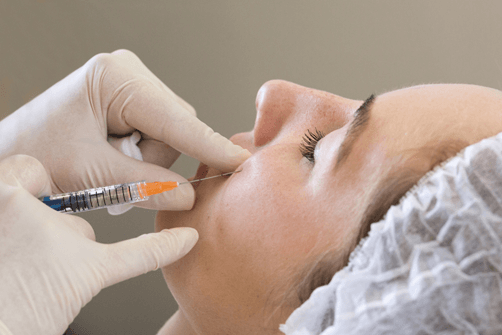 For many years, doctors and aestheticians have used needles as the primary means for delivering hand and facial filler injections. Many dermal filler packages even include the tiny half-inch needles recommended for injecting their product.
For many years, doctors and aestheticians have used needles as the primary means for delivering hand and facial filler injections. Many dermal filler packages even include the tiny half-inch needles recommended for injecting their product.
The option to use a cannula instead of a needle only became available in the last few years. A cannula, or in this case, a micro-cannula, is a hollow tube with a blunt tip and a hole on the side of the tip, making it also capable of delivering dermal fillers.
Choosing to use a cannula instead of a needle really comes down to the personal preferences of the practitioner and the patient, but as time goes on, more and more practitioners are choosing to use a cannula over a needle.
Disadvantages of Using a Needle
While needles are sharp and easily pierce the skin’s surface, they’re also very rigid. With needles, there’s always the risk a blood vessel could be nicked during the process of injecting the dermal filler.
If this should happen, the best case scenario is the patient will suffer excessive bruising and swelling. The situation becomes much worse and more serious if the filler is actually injected into a blood vessel.
Using a needle requires multiple entry points to evenly inject the filler, which can be quite bothersome, even traumatic, to some patients.
Some areas are difficult to treat using needles, such as underneath the eyes, because the skin is so thin.
Advantages of Using a Cannula
A cannula is not rigid. This flexibility allows movement through soft tissue without the risk of piercing an artery or a vein. Instead, the cannula is able to push obstacles out of the way.
While a needle is necessary to initially pierce the skin, the cannula is able to deliver a dermal filler to a much larger area with only a single entry point. Part of the reason for this is the flexibility of the cannula, but it’s also due to the fact that the cannula is much longer than the short half-inch needles that are typically used. One study also revealed that dermal filler placement was more precise when a cannula was used.
While no extensive studies have been done to prove this point, anecdotal evidence seems to indicate a shorter recovery time for patients when a cannula was used. They experience less pain, less bruising and significantly less swelling.
This becomes particularly important in the sensitive areas where the skin is thinner or exceptionally tender, such as around the mouth and eyes.
Final Thoughts
There will probably always be debate among practitioners as to the best way of delivering dermal fillers. Needles have been used traditionally, and some practitioners will no doubt continue to use them.
Using the cannula does feel different to the practitioner, so there is a slight learning curve involved. But the advantages seem to indicate that it’s worth becoming well-trained in cannula use.
Ultimately, the decision about using a needle or cannula is one that should be discussed with the patient. When they understand the differences between the two, they can become more involved in helping to design a treatment plan they can feel comfortable about.

